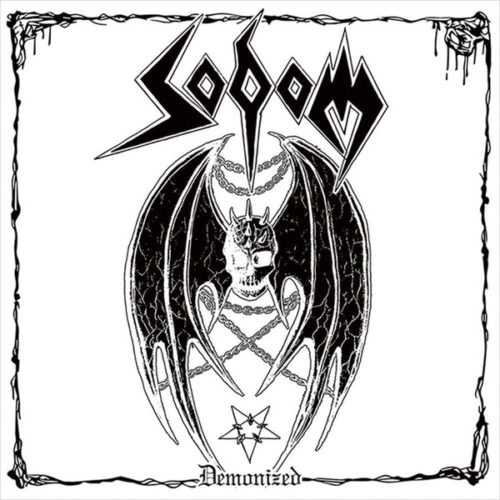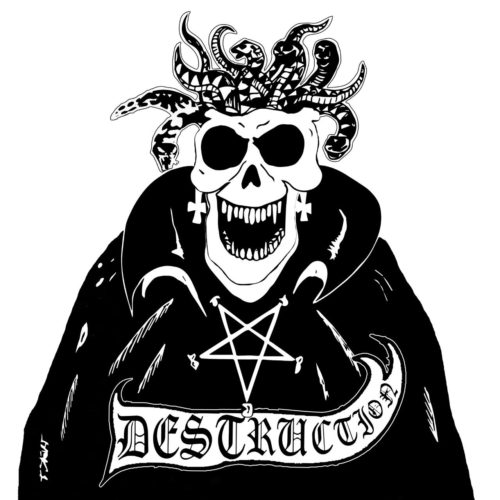Description
In the modern era of the internet, little known bands from metal’s past are often thrust into the limelight and finally get the appreciation they deserve. This is especially true of highly idiosyncratic bands that were pushing the boundaries of their genres but somehow fell through the cracks until recently. Examples of this phenomenon in the world of death metal include Demilich, Pan.Thy.Monium and Timeghoul. Strange, then, that a band like Comecon still goes relatively unnoticed. Perhaps it’s because their first album, while not bad by any means, was on the “generic” end of the Swedish death metal spectrum, even if it featured one of the scene’s most prominent frontmen, Entombed’s L.G. Petrov, on vocals. It probably also didn’t help that the band’s use of a drum machine rather than a human drummer wasn’t exactly subtle on their first release.
Which brings us to the bands second album, Converging Conspiracies, which is a completely different monster. Not only did the band refine their riff writing to the point where they easily compete with the other top-notch bands in the scene, they also recruited yet another death metal luminary on vocals (this time it’s Martin Van Drunen of Asphyx and Pestilence fame). Their drum programming skills also increased exponentially between albums, sounding just about as human as most of their peers. Most importantly, the band started to do some serious experimentation on their second album, adding strange instruments (jaw harps, for instance) and other unconventional elements to their music.
The guitar tone is typical of the early Stockholm scene, exuding that famous “chainsaw” sound. The guitar work is less melodic than contemporaries like Dismember but doesn’t quite veer into Suffocation-style amelodicism. Chugging riffs alternate with powerchord progressions and low string tremolo patterns. Solos aren’t incredibly frequent and aren’t mind-blowingly technical, either (although a few do stand out, such as the intro to “Bleed/Burn”) but are nice in the way that they trade back and forth between left and right channels. The same song also features some standout melodic lead work in the second half. Supposedly there’s bass in this album, but it’s pretty buried (or maybe not even actually present) on most tracks, with a few exceptions such as “Worms” which features some really throaty bass, most notable when the guitars drop out. The guitar tone is meaty enough anyway to fill in the low end well enough elsewhere on the album, plus there’s no dedicated bass player anyway so there’s really no one to feel sorry for.
I still can’t get over how good the drum programming is on this album. Even the blastbeats (which aren’t too frequent) don’t sound overly mechanical. There are fills, there are little accent beats here and there. This sounds like the work of a drum programmer who really wanted to emulate a human drummer who would contribute interesting patterns and fills to the band’s sound, not a drum programmer who said, “well shit, we can’t find a drummer so I guess we’ll use this machine to keep the time.” The drum samples themselves could stand to have a little more chutzpah, especially the bass drums, but they’re still clear throughout.
Van Drunen, as always, delivers a vocal performance that you’ll either love or hate. If you’re not familiar with him, his growls are in the upper register as far as death metal vocals go. He also has a distinct crazed, strained sound to his voice. Think Chuck Schuldiner on a six day crack binge without a minute of sleep and you’re not too far off the mark. He really does sound like a man at the end of his rope. Personally, I love how his crazed lunatic vocals fill in a higher part of the EQ instead of just adding more low end to the mix.
This album is chock-full of strange little quirks that really make it something special. Opening track “Democrator” ends with some strange chanted vocals. Second track “The Ethno-Surge” features jaw-harp playing over heavy guitar riffing. Third track “Community” includes a strange breakdown section where an industrial sounding distorted electric guitar plays a call and response with an acoustic guitar to great effect. And that’s just the first three songs! The album is full of moments like these, including many that are much less obvious, such as the strange way the straightforward melodic lines in “Bleed/Burn” morph into some sort of alien key. These little added touches never feel like gimmicks; they always make sense in the context of the songs they’re found in.
If these touches were removed completely, we’d still be left with an album’s worth of punishing Swedish death metal worth listen to if only because of the quality of the riff craftsmanship and the relentless aggression, aided in no small way by Van Drunen’s inspired vocal performance. With these idiosyncrasies, we’ve got something that’s leagues beyond simply “above average” death metal. We’ve instead got something that deserves “classic” status as much as the Demiliches of the world. If you’re a fan of the old school Stockholm sound or death metal that brings something unique to the table, this album is absolutely worth your time.




